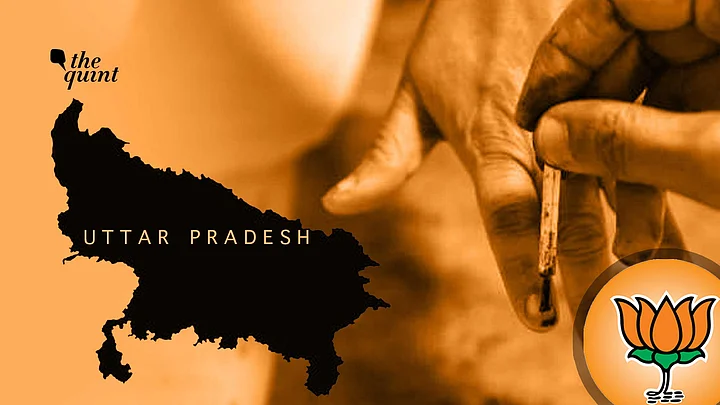As the Model Code of Conduct sets in, jod-tod politics in the Uttar Pradesh potboiler has taken the centre stage. Uttar Pradesh Cabinet Minister and senior OBC leader of the state, Swami Prasad Maurya, has resigned from the Yogi Adityanath Cabinet for the Samajwadi Party (SP). Along with him, three other MLAs have also left the Bharatiya Janata Party (BJP).
As tickets get announced, more MLAs, who are denied tickets and are mainly turncoats from the SP and the Bahujan Samaj Party (BSP) who had joined the BJP just before the 2017 state elections, may jump ship. This is bad optics for the BJP as elections are a lot about hawa (trends).
The BJP is used to MLAs from other parties joining it in hordes before polls. But will these changed winds damage the BJP’s prospects in Uttar Pradesh? History shows such rebels have a mixed track record.
In his resignation letter, Maurya claimed that OBCs, Dalits, and youth were being neglected by the Uttar Pradesh government.
The Two Types of Leaders Leaving BJP
MLAs hopping bandwagons is nothing new. But a Cabinet minister leaving the party just before the election, and that too when all surveys point towards a BJP victory, is baffling. It is learnt that Maurya was asking for tickets for his family members as well, while the BJP wishes to implement a one-family-one-ticket rule.
Two types of leaders are and might be leaving the BJP in the coming days – ones who feel the party is going to lose and others who feel or are tipped that they would be denied a ticket. On average, the BJP denies tickets to 25 per cent to 35 per cent of MLAs to negate anti-incumbency. There is a lot of anger against the non-performance of sitting MLAs across parties; 42% of respondents said that there is anti-incumbency against MLAs as per the ‘Jan Ki Baat’ survey.
Of the four leaders who have resigned recently, three are ex-BSP members. In the run-up to the 2017 elections, the BJP had inducted many leaders from the SP, the BSP and the Congress. It had given tickets to more than 50 turncoats. As many as 12 of them even became Ministers in the Yogi Cabinet, which is one in every five ministers.
At a time when 75 to 100 MLAs could be denied tickets as per reports, this exodus could damage BJP’s chances of retaining power. No party since 1985 has come back to power in Uttar Pradesh.
The Battle of East UP Will be Crucial
In terms of optics, this is not good news for the BJP and may convince undecided voters to back the SP, and even demotivate the cadre of the saffron party. However, the track record and victory performance of such candidates is mixed. In Maharashtra, while the majority of hoppers won on a BJP ticket in 2020, in Bengal, only six of the 19 rebel Trinamool Congress MLAs could register a victory in 2021. Maurya claims that many more MLAs are in touch with him.
The Maurya or Kushwaha community accounts for 6 per cent of the state’s population. His entry in 2016 did help the party consolidate this caste group, along with the appointment of Keshav Prasad Maurya as state president. Keshav is currently the Deputy Chief Minister and the party has deputed him to cajole Swami to stay in the party.
The SP has formed an alliance with the Mahan Dal, which is a caste-based party of Mauryas. However, it has never won a seat in Uttar Pradesh. Swami’s induction could help the party give tough competition to the BJP in eastern Uttar Pradesh (Purvanchal). It is here where the BJP is facing comparatively more heat than western UP.
But Can the Exodus Backfire on SP?
Through innovative social engineering, the BJP created this vote bank of ‘NYOBC’ comprising Lodh, Kurmi, Maurya, Nishad, Patels, Prajapati communities, among others. It consists of more than 70 sub-castes and accounts for 30 per cent of the state population. These small groups backed the BJP on the plank of ‘anti-Yadav-waad’ and the larger banner of Hindutva. The party, to be fair, has also given due representation to MLAs from these caste groups in the state cabinet.
Now, this is a very difficult vote bank to keep happy or hold on to as it is fairly heterogeneous. Different sub-sects have different leaders, aspirations and demands.
And this appears to be cracking now. OP Rajbhar of the Suheldev Bharatiya Samaj Party (SBSP) has left the National Democratic Alliance (NDA) and joined the SP-led alliance. Anupriya Patel of Apna Dal, BJP’s partner, is demanding an OBC census. The Nishads are unhappy with the BJP as the promise of their inclusion in the SC list has not yet been fulfilled.
These leaders hopping on to the SP have some individual votes, and together with SP’s Muslim-Yadav and cadre votes, they hope to win. However, as anti-incumbency is high against sitting MLAs, this move could also backfire on the SP. A section of voters could see this as opportunism and the MLAs’ non-performance could boomerang on the SP. For the BJP, it could also be seen as akin to the removal of deadwood.
(The author is an independent political commentator and can be reached at @politicalbaaba. This is an opinion piece. The views expressed above are the author’s own. The Quint neither endorses nor is responsible for them.)
(At The Quint, we question everything. Play an active role in shaping our journalism by becoming a member today.)
